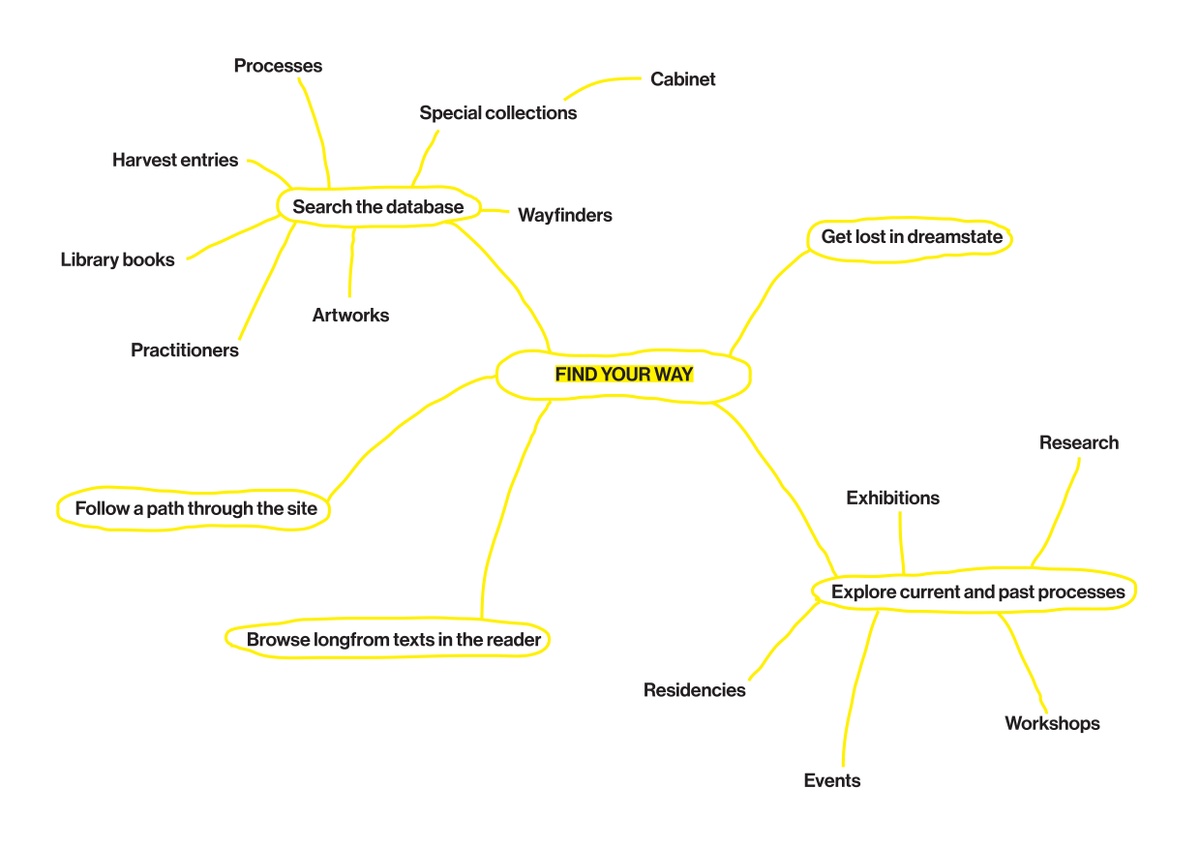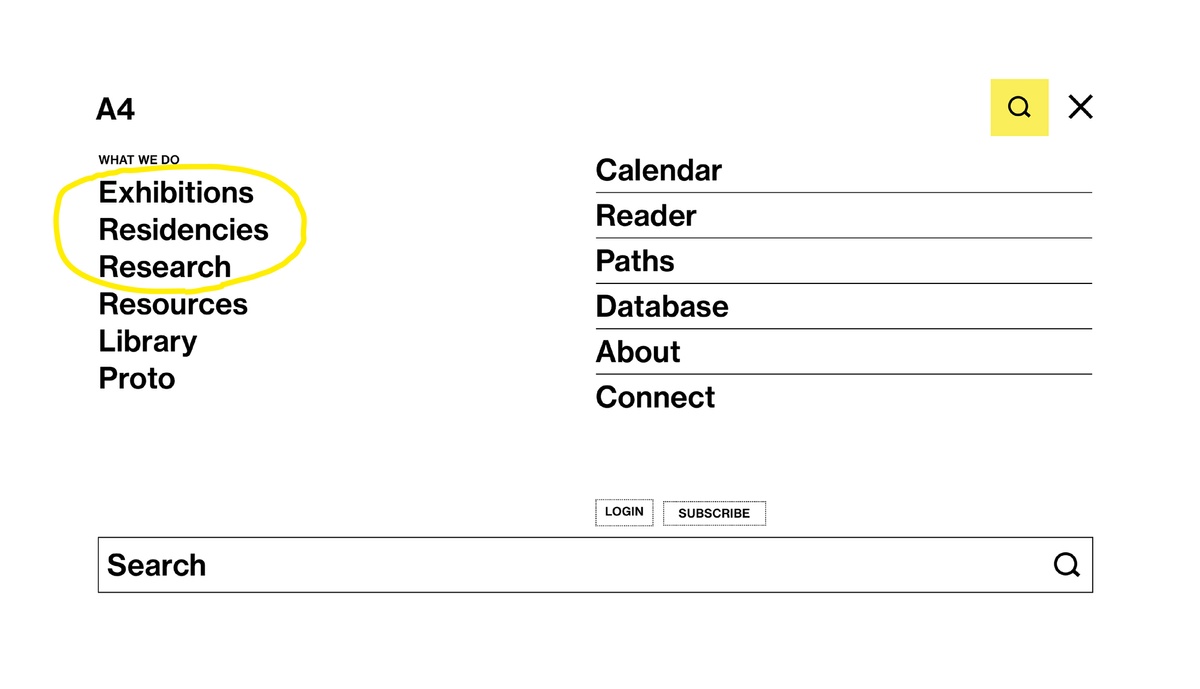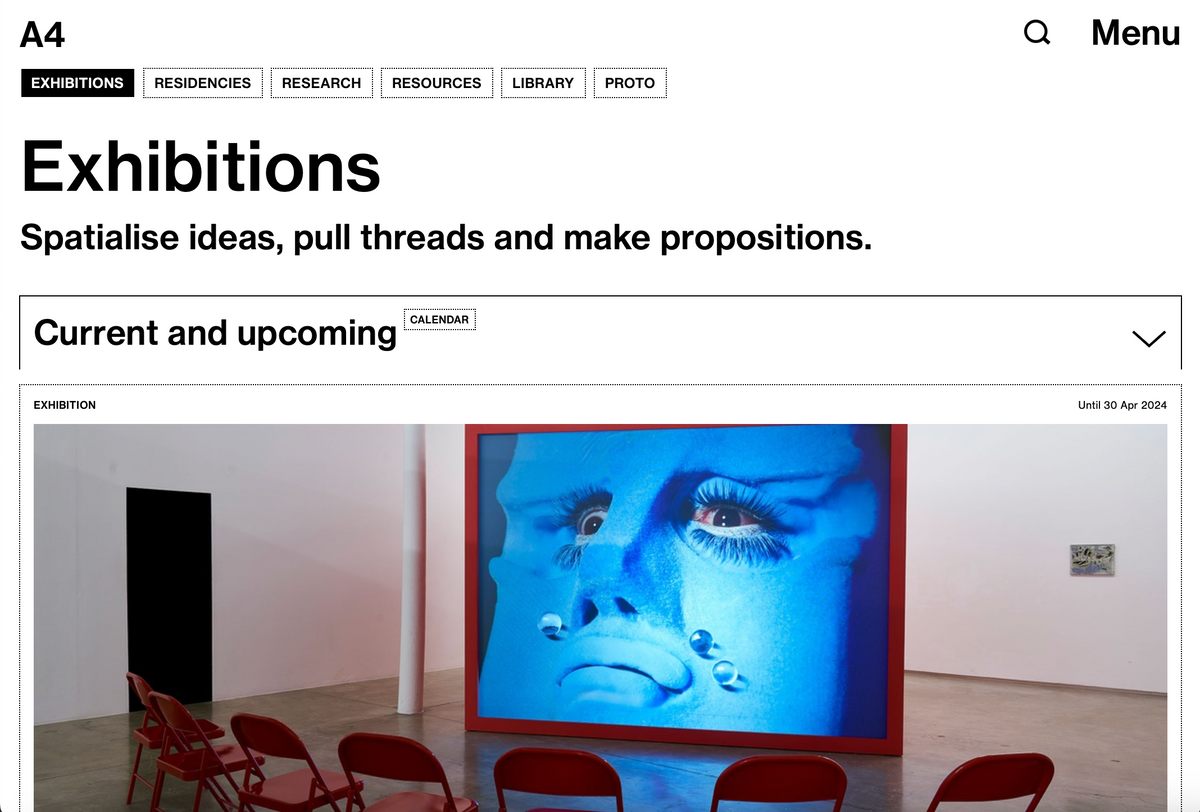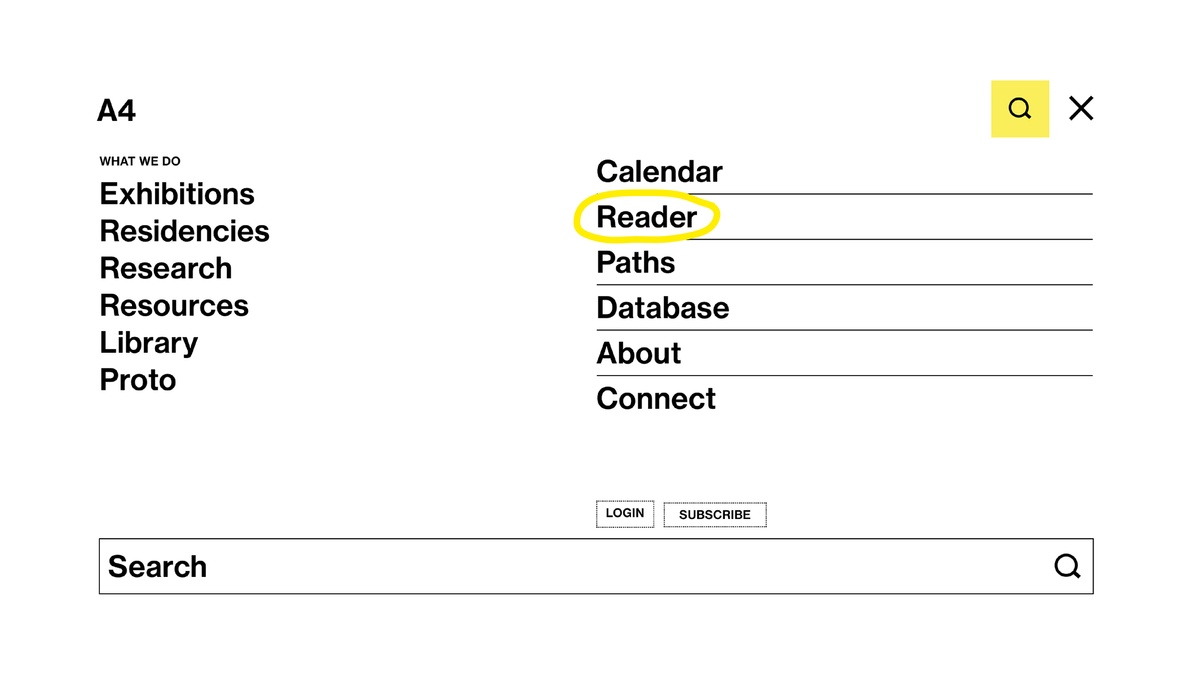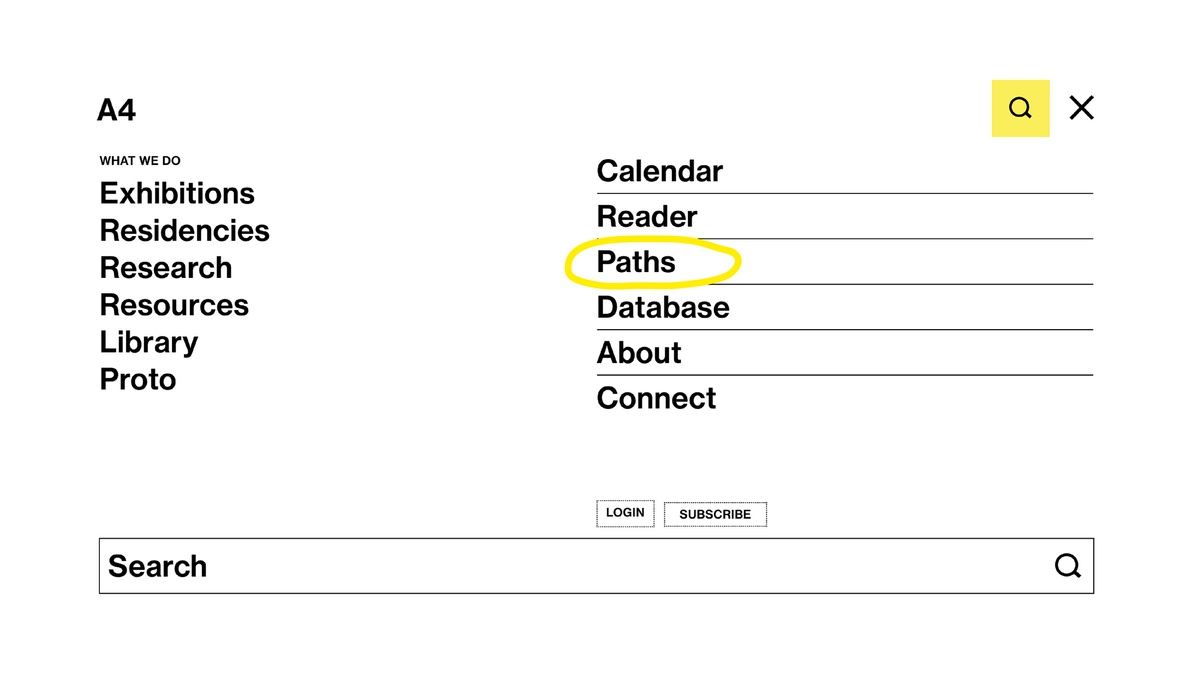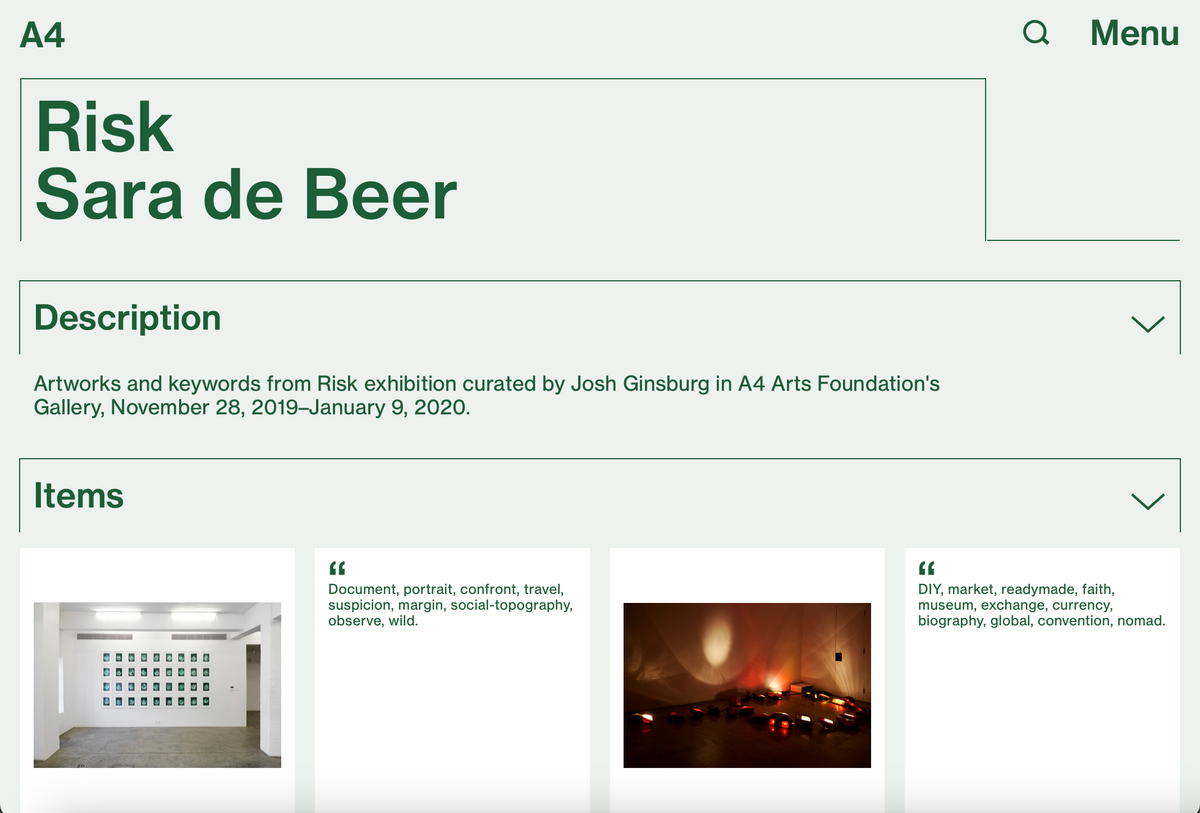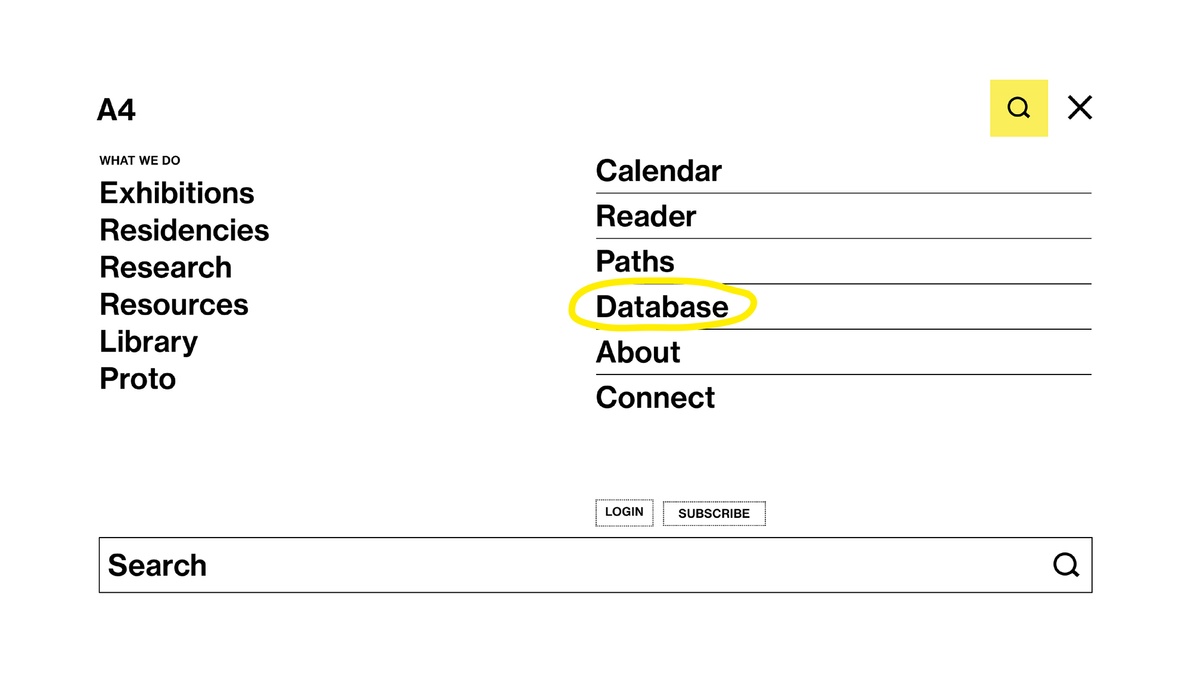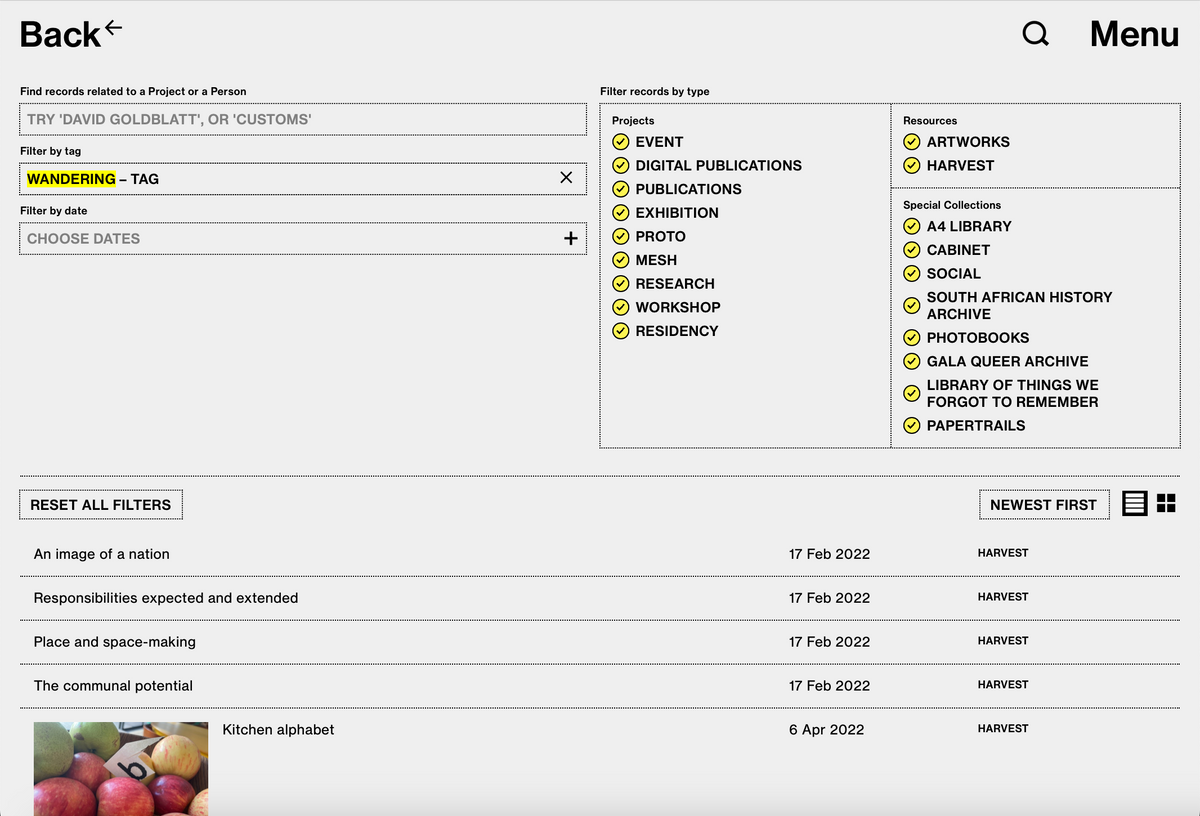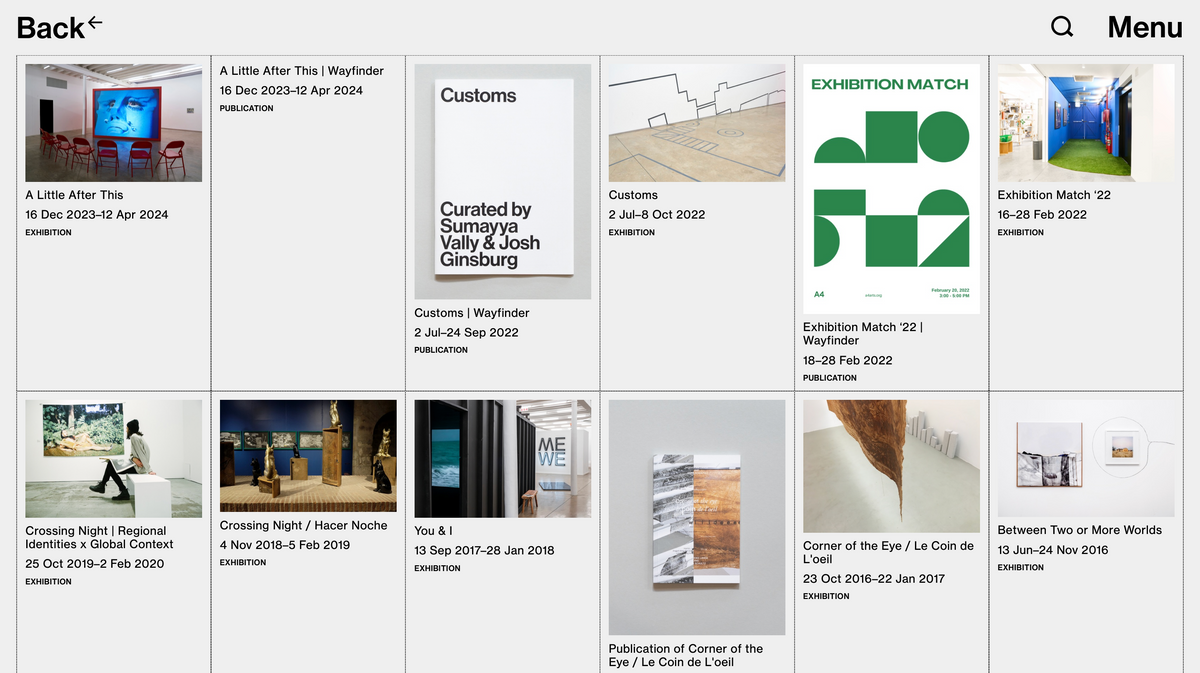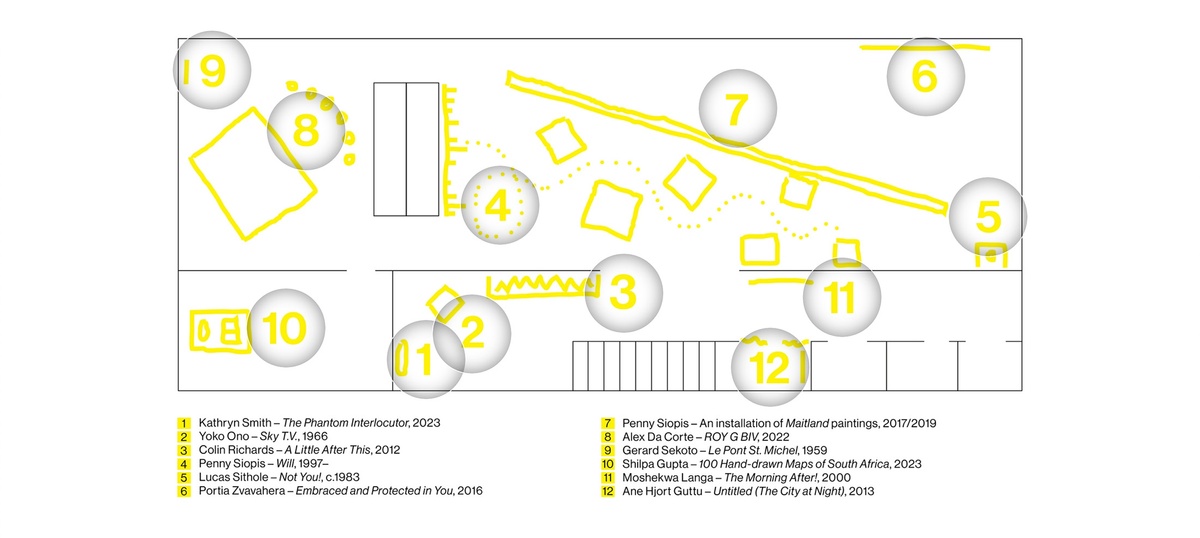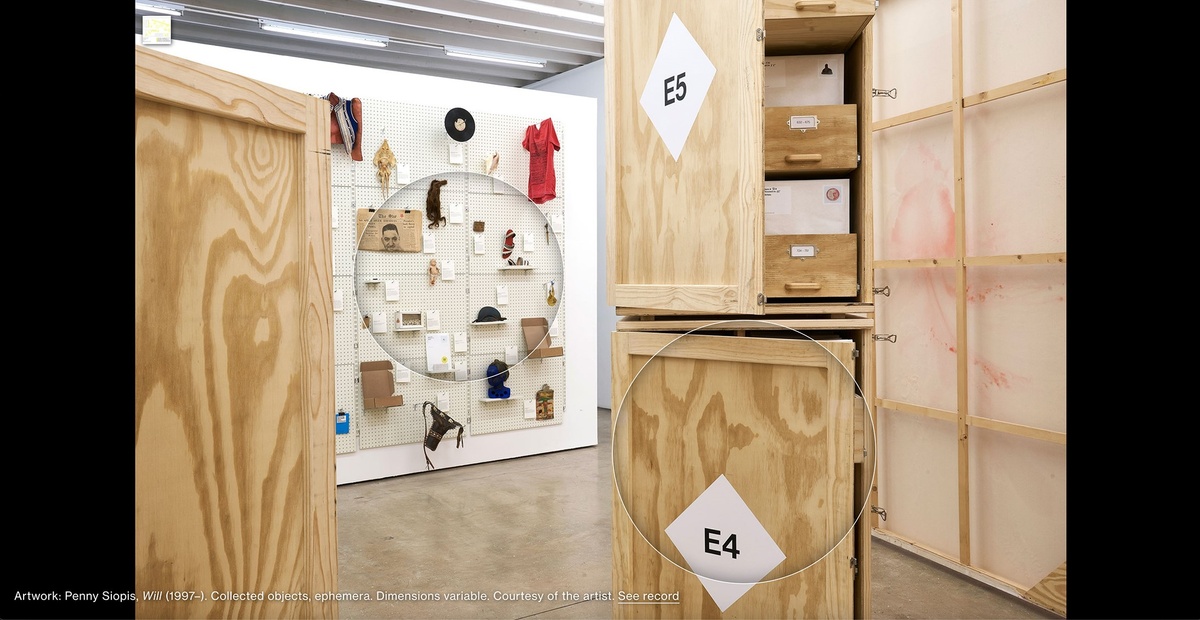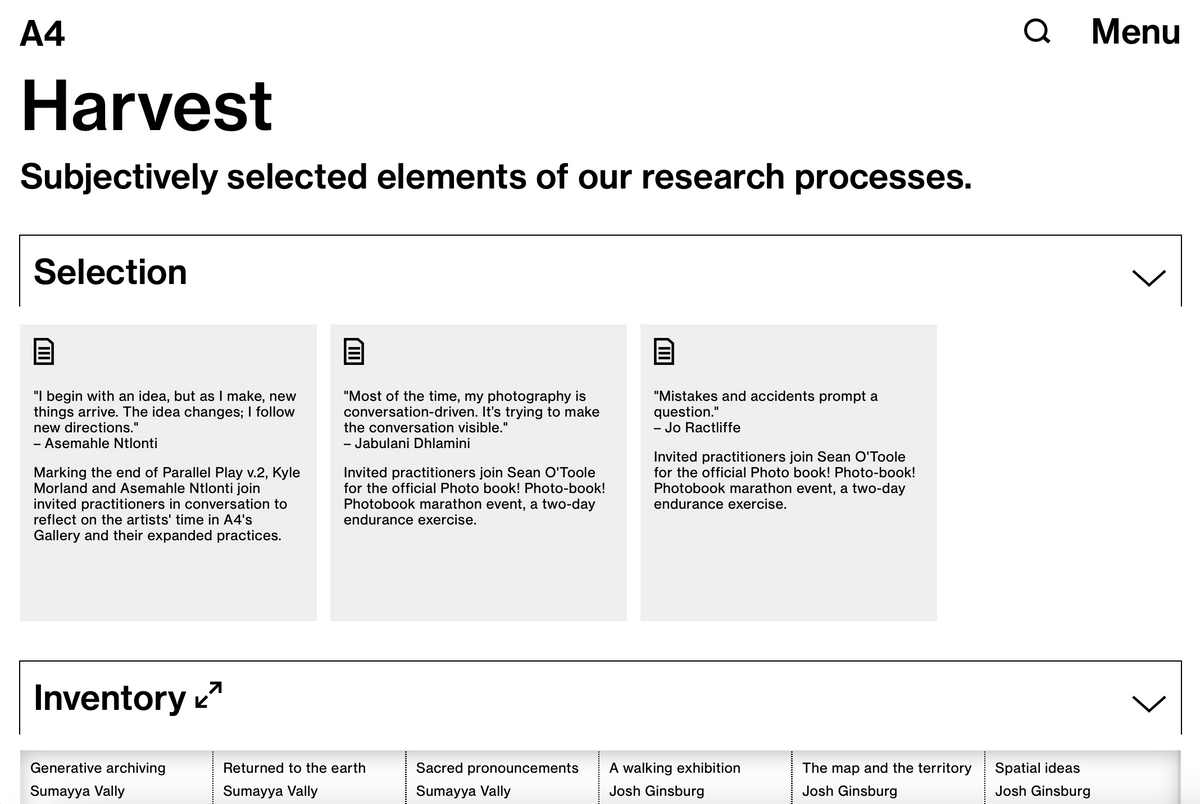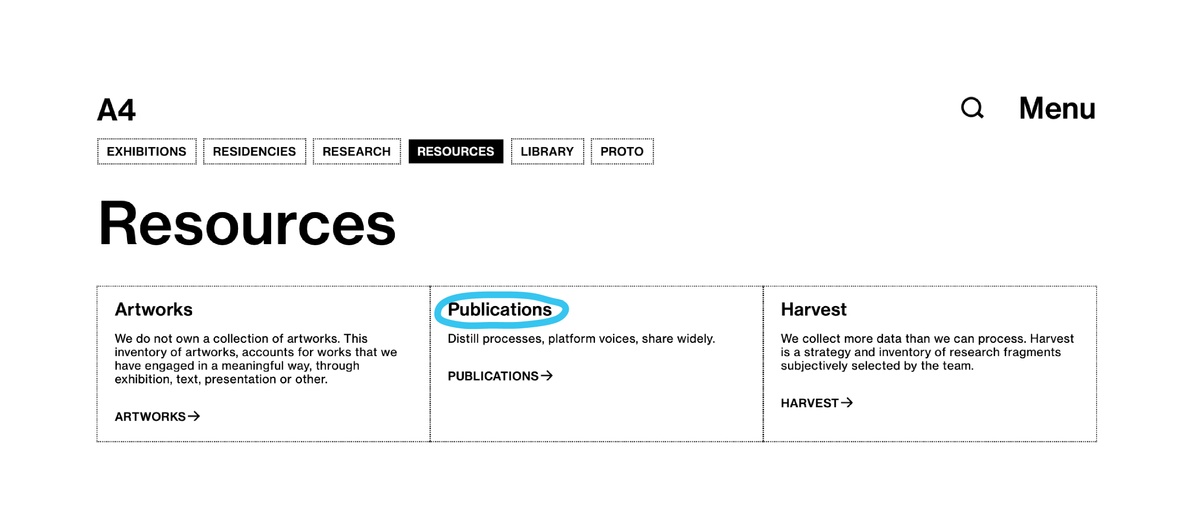A4’s online environment offers a record of past processes, a repository of ideas, archives and artworks, and tools for research and wandering. It is a place to find things and a place to get lost; a platform for structured engagements and incidental encounters. The site’s contents and mechanisms make visible curatorial practice, revealing the often unseen corners of exhibition-making and -thinking. Different modes of moving through the database afford opportunities to create novel intimacies between disparate entries.
The Database hosts a number of resources like Artworks, Publications, Harvest Items, and Special Collections. A4 does not have a collection of artworks, but we collect the stories and traces of artworks that have been shown at A4 together with artworks we are custodians of while they spend time at A4. Special collections include parts of the archives belonging to artists and organisations that have been digitised by A4 (with permission) so that they can be shared with the public.
The content on the website is A4's content, or content shared by collaborators and practitioners who we are lucky enough to work alongside. If you'd like to make use of any of the content on this site please follow the terms and conditions of the license: Creative Commons Attribution-NonCommercial-NoDerivatives 4.0 International.
This website was developed and designed by our friends at Linked by Air. It is built in the CMS Economy and integrates with A4's information management system in Airtable.
